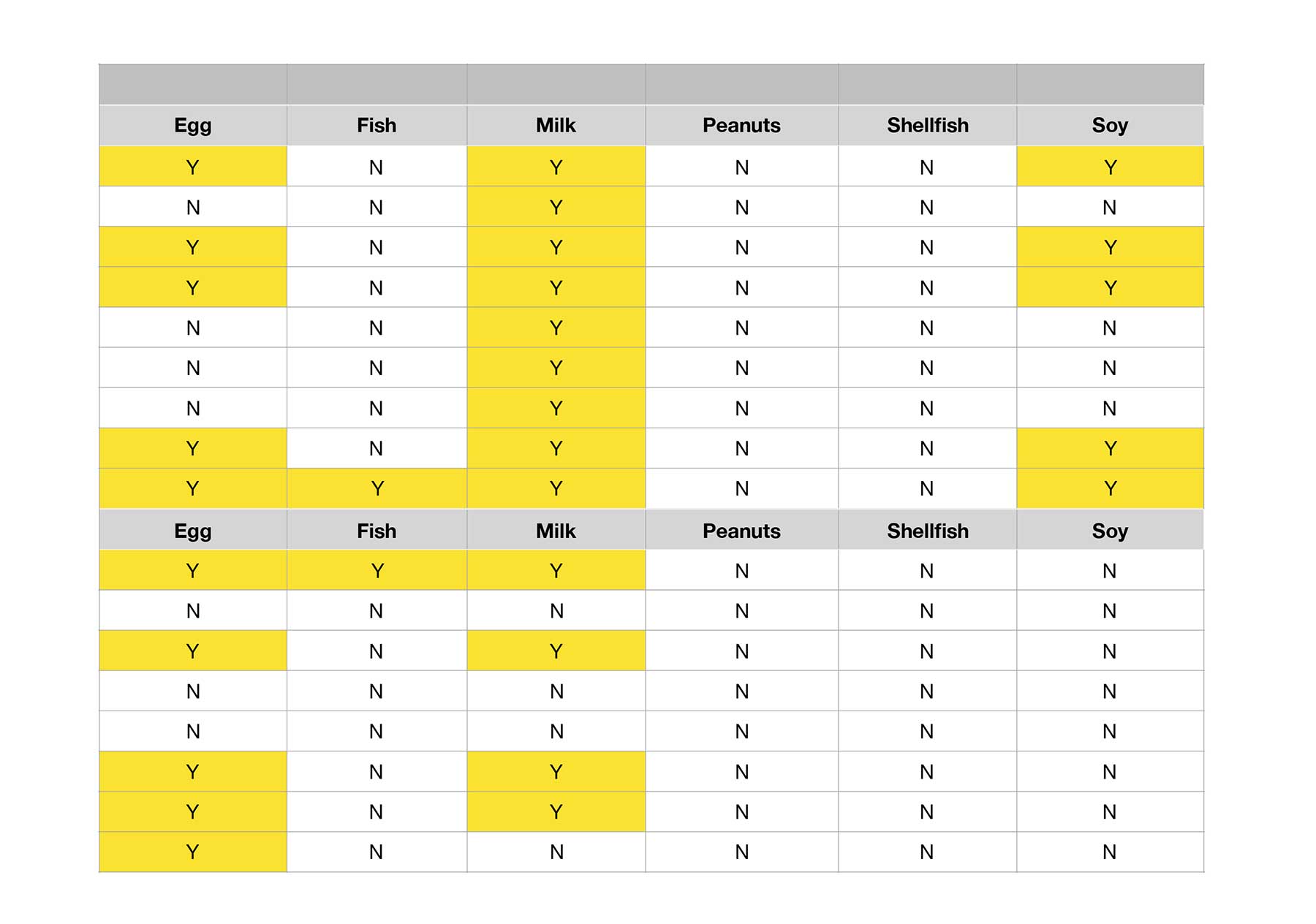Often times, when you go into a restaurant or onto a restaurant’s website, you’ll find an Allergen Menu (or Matrix). This concept seems like a great idea, and in theory, it is. Food allergy customers look for them and ask for them, and they can drive the dining decisions they make.

Restaurants have created allergen menus to show they care about their customers, and so that customers understand what they might be able to safely order if they have food allergies. However, this level of care can backfire as insufficient information puts everyone at risk. These menus create a false sense of security for both the customer and the restaurant and can fall short for several reasons:
They only take into account the Top 8 (or 10, or 12…)
There are 170 foods that have been known to cause food allergic reactions. Granted, the most common allergens are covered in these menus, but they still fall far short of being able to cover every allergy that might walk through the door. Yes, garlic, onions, tomatoes, and pork are all real, life-threatening allergens for some customers.
They don’t take into account cross-contamination
Generally, the ingredients for a dish on a menu are sent off for analysis by a nutritionist or other expert and the restaurant is given a list of the allergens contained in that dish. Other items that share cooking surfaces are not taken into consideration and without cross-contamination, both parties are taking too much of a risk of a reaction. Some of my worst reactions have been because of shared fryers or shared grill tops.
They don’t take combinations into account
These menus are ‘single-allergen-aware’, meaning each box in the matrix takes into account a single allergen, such as wheat. 30% of food allergic folks are allergic to a combination of foods. If a customer’s combination is entirely contained in the top allergens, they still have to cross-reference each allergen to find something to order that is potentially safe. If the combination isn’t in the top allergens, the allergen menu is useless.
Allergen menus make restaurant staff and guests feel like they have a safe resource to rely on but in reality, they have a tool to use as a starting place. Customers don’t want to be ‘that customer’ or a pain for their server. The staff already struggles with the lack of time during service to do all of the things to keep everyone happy. So, the allergen menu saves the day! When the customer orders off an allergen menu, they may not take the extra, stigmatized step of talking with the server or the server may not have the conversation with the chef. However, because of these shortcomings, they only come close to being effective and as they say, close only counts in horseshoes and hand grenades.
CertiStar has solved these issues. We create an easy-to-read and individualized menu for each food allergic customer based on the restaurant’s menu with any combination of any number of allergens. Green shows what the guest can order. Yellow shows the modifications the kitchen can make. Red is unsafe and can’t be changed. The restaurant can print it out, show it to them on any device, or share the results with the customer in conversation. It’s easy for the restaurant and saves time. It’s easy for the guest and saves lives.

Anything less than complete information is risky for the lives of guests and opens restaurants to unnecessary liability. With CertiStar, a new solution is available and the antiquated allergen menu should be eliminated. That’s menu innovation that saves lives.

